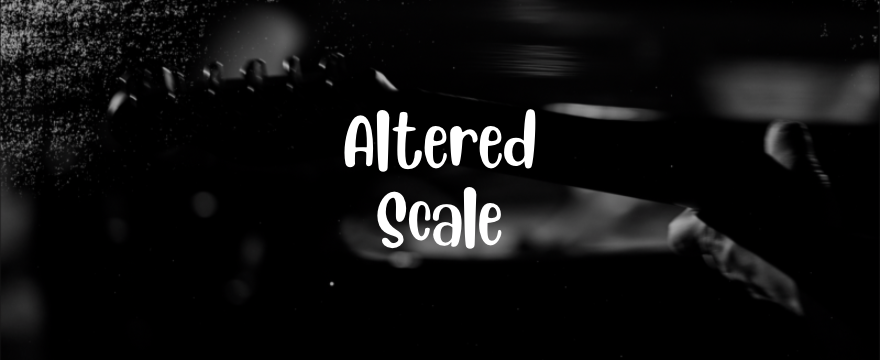This lesson is an introduction to the Altered Scale. It is very brief, but is intended to give you a “positional” framework to use as a starting point for improvising with this scale.
What is the altered scale?
This is one name for the 7th mode of the melodic minor scale. Another name for it is “Super Locrian”.
In case you aren’t familiar; the Melodic Minor scale is almost identical to the regular major scale. The only difference is that you would lower the 3rd from the Major scale to get the Melodic Minor of the same root note.
Melodic Minor has a very interesting sound that is used widely in jazz and other styles. Specifically in styles and genres that use rich harmony.
The 7th mode of Melodic Minor is what we’re calling the “Altered” scale. You play this by beginning and ending your scale on the 7th scale degree of Melodic Minor.
Why is it useful?
There is a group of dominant 7th chords that I refer to as “Altered Chords”. So, this group includes dominant 7th chords that use any number of altered “extensions”.
The chords that I include in this group would be:
- 7(#9)
- 7(b9)
- 7(#5)
- 7(b5)
The chord type that I use in this lesson is the 7(#5,#9). As you can see it combines the #5 AND the #9 together into one chord.
You’ll see these chords used very commonly as a 5 chord in a minor key. They have a rich and dark sound that allows you to create tension, pull you back towards the 1 chord.
Knowing this important mode will allow you to play over these challenging and dense chords.
My journey with this scale
It has taken me quite a long time to get really comfortable with the sound of this scale. For one it has an extremely unsteady sound to me. The “perfect” intervals that make Major or Minor scales so easy to listen to is totally absent.
The scale felt very unfamiliar and strange at first, but over time I began to understand it better.
Practicing it in the context of chord patterns, in the way I present in this video, is how I was able to make more sense of the sounds.
That’s why I’m sharing this positional framework with you. I want to help you start using this scale in a way that is musical and is a complete idea that you can expand upon.

Leave a Reply
You must be logged in to post a comment.